| Condominium of Bosnia and HerzegovinaKondominijum Bosna i Hercegovina (Serbo-Croatian) Кондоминијум Босна и Херцеговина (Serbian Cyrillic) Kondominium Bosnien und Herzegowina (German) Bosznia-Hercegovinai Kondomínium (Hungarian) | |||||||||
|---|---|---|---|---|---|---|---|---|---|
| 1878–1918 | |||||||||
 Flag
Flag
 Coat of arms
Coat of arms
| |||||||||
 Bosnia and Herzegovina (shown in blue) within Austria-Hungary (shown in pink and green) Bosnia and Herzegovina (shown in blue) within Austria-Hungary (shown in pink and green) | |||||||||
| Status | Condominium between Austria and Hungary | ||||||||
| Capitaland largest city | Sarajevo | ||||||||
| Official languages | German and Hungarian | ||||||||
| Common languages | Serbo-Croatian | ||||||||
| Government | Constitutional Monarchy | ||||||||
| Emperor-King of Austria-Hungary | |||||||||
| • 1878–1916 | Franz Joseph I | ||||||||
| • 1916–1918 | Charles I | ||||||||
| Joint Minister of Finance | |||||||||
| • 1878–1880 (first) | Leopold von Hofmann [de] | ||||||||
| • 1918 (last) | Alexander Spitzmüller | ||||||||
| Governor | |||||||||
| • 1878 (first) | Josip Filipović | ||||||||
| • 1914–1918 (last) | Stjepan Sarkotić | ||||||||
| Legislature | Diet (after 1910) | ||||||||
| Historical era | New Imperialism / WWI | ||||||||
| • Treaty of Berlin | 13 July 1878 | ||||||||
| • Bosnian crisis | 7 October 1908 | ||||||||
| • Secession | 1 December 1918 | ||||||||
| Population | |||||||||
| • 1879 | 1,184,164 | ||||||||
| • 1885 | 1,336,091 | ||||||||
| • 1895 | 1,568,092 | ||||||||
| • 1910 | 1,898,044 | ||||||||
| Currency | Kruna | ||||||||
| |||||||||
| Today part of | Bosnia and Herzegovina Montenegro | ||||||||
Bosnia and Herzegovina fell under Austro-Hungarian rule in 1878, when the Congress of Berlin approved the occupation of the Bosnia Vilayet, which officially remained part of the Ottoman Empire. Three decades later, in 1908, Austria-Hungary provoked the Bosnian Crisis by formally annexing the occupied zone, establishing the Condominium of Bosnia and Herzegovina under the joint control of Austria and Hungary.
History
Occupation
Main article: Austro-Hungarian campaign in Bosnia and Herzegovina in 1878

| This section should include only a brief summary of Austro-Hungarian campaign in Bosnia and Herzegovina in 1878. See Misplaced Pages:Summary style for information on how to properly incorporate it into this article's main text. (December 2016) |
Following the Russo-Turkish War (1877–1878), in June and July 1878 the Congress of Berlin was organized by the Great Powers. The resulting Treaty of Berlin caused Bosnia and Herzegovina to nominally remain under sovereignty of the Ottoman Empire, but was de facto ceded to Austria-Hungary, which also obtained the right to garrison the Sanjak of Novi Pazar. According to article 25:
The provinces of Bosnia and Herzegovina shall be occupied and administered by Austria-Hungary. The government of Austria-Hungary, not desiring to undertake the administration of the Sanjak of Novi-Pazar, which extends between Serbia and Montenegro in a South-Easterly direction to the other side of Mitrovitza, the Ottoman administration will continue to exercise its functions there. Nevertheless, in order to assure the maintenance of the new political state of affairs, as well as freedom and security of communications, Austria-Hungary reserves the right of keeping garrisons and having military and commercial roads in the whole of this part of the ancient vilayet of Bosnia. To this end the governments of Austria-Hungary and Turkey reserve to themselves to come to an understanding on the details.
The Austro-Hungarian Army engaged in a major mobilization effort to prepare for the assault on Bosnia and Herzegovina, commanding by the end of June 1878 a force of 82,113 troops, 13,313 horses and 112 cannons in the VI, VII, XX, and XVIII infantry divisions as well as a rear army in the Kingdom of Dalmatia. The primary commander was Josip Filipović; the forward XVIII infantry division was under the command Stjepan Jovanović, while the rear army commander in Dalmatia was Gavrilo Rodić. The occupation of Bosnia and Herzegovina started on 29 July 1878 and was over on 20 October.
The Ottoman army in Bosnia and Herzegovina at the time consisted of roughly 40,000 troops with 77 cannons, that, when combined with local militias, totalled around 93,000 men. The Austro-Hungarian troops were occasionally met with ferocious opposition from elements of both Muslim and Orthodox populations there, and significant battles occurred near Čitluk, Stolac, Livno and Klobuk. Despite setbacks at Maglaj and Tuzla, Sarajevo was occupied in October 1878. Austro-Hungarian casualties amounted to over 5,000 and the unexpected violence of the campaign led to recriminations between commanders and political leaders. Fierce resistance from Muslims was expected as Austro-Hungarians realized their occupation meant that Bosnian Muslims would lose their privileged status based on their religion.
Tensions remained in certain parts of the country (particularly Herzegovina) and a mass emigration of predominantly Muslim dissidents occurred. However, a state of relative stability was reached soon enough and Austro-Hungarian authorities were able to embark on a number of social and administrative reforms which intended to make Bosnia and Herzegovina into a "model colony". With the aim of establishing the province as a stable political model that would help dissipate rising South Slav nationalism, Habsburg rule did much to codify laws, to introduce new political practices, and generally to provide for modernization.
Ethnic relations
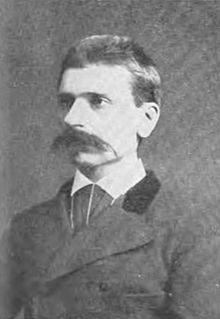
The Austro-Hungarian administration advocated the ideal of a pluralist and multi-confessional Bosnian nation. Joint Imperial Minister of Finance and Vienna-based administrator of Bosnia Béni Kállay thus endorsed Bosnian nationalism in the form of Bošnjaštvo ("Bosniakhood") with the aim to inspire in Bosnia's people a feeling that they belong to a great and powerful nation' and viewed Bosnians as "speaking the Bosnian language and divided into three religions with equal rights.". Between 1861 and 1869, Topal Osman Pasha, an Ottoman Grand vizier had striven to do the same.
On the one hand, these policies attempted to insulate Bosnia and Herzegovina from its irredentist neighbours (Eastern Orthodox Serbia, Catholic Croatia, and the Muslim Ottoman Empire) and to marginalize the already circulating ideas of Serbian and Croatian nationhood among Bosnia's Orthodox and Catholic communities, respectively. On the other hand, the Habsburg administrators precisely used the existing ideas of nationhood (especially Bosnian folklore and symbolism) in order to promote their own version of Bošnjak patriotism that aligned with loyalty to the Habsburg state. Habsburg policies are thus best described not as anti-national, but as cultivating their own style of pro-imperial nationalism. This policy had mixed results. Overall, most Serb and Croat politicians ultimately ignored or opposed the policy, but Serb and Croat politicians also tried and failed to secure the allegiance of Bosnian Muslim constituencies. At the same time, Austro-Hungarian officials actively promoted Bosnia and Herzegovina as new and flourishing crownlands. Habsburg officials publicized numerous exhibits on Bosnian history, folklore, and archaeology, with artists like Alphonse Mucha presenting the Bosnian pavilion at the Paris Exposition of 1900.
The idea of a unified South Slavic state (typically expected to be spearheaded by independent Kingdom of Serbia) became a popular political ideology in the region at this time, including Bosnia and Herzegovina.
Certain Muslim circles in Bosnia and Herzegovina published the newspaper Bošnjak ("Bosniak"). This newspaper caused fierce discussions in Bosnia and Herzegovina, Croatia, and Serbia. The newspaper supported Kállay's policy, whose goal was to strengthen Austro-Hungarian rule in occupied Bosnia and Herzegovina. Although Kállay's policy was not widely accepted even amongst Muslims, Bošnjak nevertheless represented the national aspirations of some Muslims in Bosnia and Herzegovina.
Kállay's policy was finally defeated in 1896 and 1899, when Bosnian Serbs and Muslims called for religious and educational autonomy. Kállay's policy had some potential to resist Croatian and Serbian national aspirations, but after 1899 and 1900 his policy of promoting Bosnian identity had no significant effect.
After the death of Kallay, the policy was abandoned. By 1905, nationalism was an integral factor of Bosnian politics, with national political parties corresponding to the three groups dominating elections.
Soon after Austria-Hungary occupied Bosnia and Herzegovina in 1878, the government took the area's religious activities and institutions under its sovereignty. Austro-Hungarian authorities issued regulations which made Muslim clergy Austro-Hungarian state officials, answer exclusively to them. This was to isolate Bosnian Muslims from the Ottoman Empire, and its clergy who were subordinate to the Sultan. The Muslims were largely unhappy with their new status and formed Muslim political opposition. This Muslim opposition demanded, at first, Muslim religious autonomy from Austria-Hungary, but later, as it grew stronger, they demanded autonomy from the Ottoman Empire. The Muslim opposition tried to align itself with the Serbs, who were also demanding religious and educational autonomy. But unsolved agrarian relations between the Muslim leadership and the Serbs were an obstacle to any far-reaching alliance. The alliance that did form was only tactical. Later, the Muslim leadership emphasized Ottoman sovereignty over Bosnia and Herzegovina and demanded the right to organize their religious activity under the aegis of the Shaykh al-Islām of the Ottoman Empire.
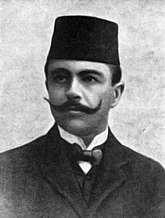
With Kállay's death in 1903, the situation in Bosnia and Herzegovina was liberalized. The national movements in Bosnia and Herzegovina were transformed into political parties. Muslims founded the Muslim National Organization (MNO) in 1906, Serbs formed the Serbian National Organization (SNO) in 1907, and Croats formed the Croat National Union (HNZ) in 1908. Another significant Croatian party, though less represented than the HNZ, was the Croatian Catholic Association (HKU).
The MNO considered Bosnia and Herzegovina to be part of the Ottoman Empire until the collapse of Austria-Hungary in 1918. They considered Austria-Hungary a European country assigned to control Bosnia and Herzegovina. Their main goal was to achieve Muslim religious autonomy and to maintain the agrarian relations that were in force at the time. In 1909 they achieved their religious autonomy.
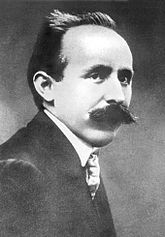
Textbooks printed in Serbia and a number of other Serbian-language books were banned. Austro-Hungarian authorities signed a treaty with the Ecumenical Patriarchate of Constantinople by which the Emperor gained control over the Serbian Orthodox Church in Bosnia and Herzegovina in exchange for annual reimbursement. Serbs largely disapproved of Austro-Hungarian control over their religious institutions and organised a struggle to gain their religious autonomy. The struggle was ended in their favour in 1905. After gaining religious autonomy, the Serbs gathered around four political groups, out of which three became notable. The notable groups became known by the names of their official newspapers, the Srpska riječ (Serbian Word), the Petar Kočić's Narod i Otadžbina (the People and Fatherland) and the Lazar Dimitrijević's Dan (the Day). Later they demanded unity under one party, which was approved by them, so they founded the Serbian People's Organisation. As a relative majority, the Serbs were a dominant political factor, and as such they demanded Bosnia and Herzegovina's autonomy from the Ottoman Empire and Austria-Hungary. Serbian politics in Bosnia and Herzegovina was dominated by the three factions gathered around the three newspapers. The main problem of Serbian civic politics was the agrarian reaction. Serb peasants demanded to be liberated from feudal relations, while on the other hand, they wanted to maintain cooperation with the Muslim People's Organisation in achieving national aspirations. The group gathered around Kočić's Narod i Otadžbina newspaper completely stood for the Serbian peasantry against the Muslims in order to change the agrarian position of the peasantry. Kočić's group also banned any cooperation with the Austrian-Hungarian authorities. The group gathered around Dimitrijević also advocated a radical change in agrarian relations and criticised the Serbian civic leadership for neglecting the peasantry, but they advocated cooperation with the Austro-Hungarian authorities in changing agrarian relations. The main goal of Serbian politics in Bosnia and Herzegovina was the removal of Austro-Hungarian authority in Bosnia and Herzegovina and the annexation of Bosnia and Herzegovina to the Kingdom of Serbia. Their goals, however, were no obstacle to economic cooperation with the Austrian-Hungarian authorities.
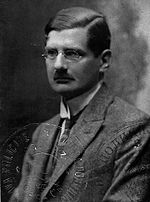
In order to suppress national aspirations, the Austrian-Hungarian authorities tried to limit the activity of the Franciscans in Bosnia and Herzegovina. The Emperor and the Holy See discussed the reestablishment of the Catholic Church in Bosnia and Herzegovina. The Emperor's goal was to have the Church in Bosnia subordinated to his secular power within the Church. In the end, in 1881, the Holy See yielded, on condition that the Emperor did not explicitly mention his authority in a bulla which he, however, did. After establishing secular power over the Catholic Church in Bosnia and Herzegovina, the Emperor established the cathedral in Sarajevo and named Archbishop Dr. Josip Štadler as its head. Just before the occupation of Bosnia and Herzegovina, the Croatian Sabor asked the Emperor to alter the situation in Bosnia and Herzegovina so it could be unified with the Kingdom of Croatia-Slavonia and the Kingdom of Dalmatia. The Emperor refused to accept this demand and dismissed the Sabor. This was done as the Austrian-Hungarian authorities had a plan to isolate Bosnia and Herzegovina from its neighbouring Slavic countries, Croatia and Serbia, and to halt the national aspirations of the nations in Bosnia and Herzegovina. The authorities did not only suppress the Croatian and Serbian names but also any flags, coats of arms and folk songs. Any activity that would emphasise a common interest of Croats in Bosnia and Herzegovina and those in the Triune Kingdom was suppressed from the start. As they were unable to form a political party, especially under Kállay's administration, Croats formed various musical societies, reading rooms, schools, economic institutions and newspapers. The authorities forbade these societies from using the word "Croatian", even though they allowed the use of the word "Serbian" for Serbian societies. Only later was the use of the word "Croatian" allowed. This official policy was pushed by Hungarian circles, especially under Kállay and his successor Stephan Burián von Rajecz. The goal of their policy was to weaken the Croatian position in Bosnia and Herzegovina by strengthening the Serbian position, in order to make unification of Bosnia and Herzegovina with Croatia less likely. Even though the authorities tried to isolate Bosnia and Herzegovina from the influence of neighbouring Slavic countries, Croatian people in Bosnia were nevertheless influenced by all three major political movements from Croatia, first the Illyrian movement, later Yugoslavism and Croatian nationalism.

In Croatian politics, there were two factions and their formal political organising ran slowly. The fundamental reason for this Croatian political division was disagreement between the Franciscan Bosnian Province and the Archbishop's Chancery on the organisation of parishes within the archdiocese. The first initiative for the creation of a Croatian political party came from the Croatian intelligentsia which gained support from the Franciscans. In 1908, after some preparations, it founded the Croatian People's Union with Ivo Pilar as its main ideologist. In its program, the HNZ advocated the annexation of Bosnia and Herzegovina by Austria-Hungary and its unification with the rest of the Croatian lands. In relations with the Serbs, the HNZ stood for strict reciprocity, rejecting the idea of Bosnia and Herzegovina's unification with any other country or its autonomy. The HNZ did not demand any changes in social relations or changes in agrarian relations. They tried to maintain good relations with the Muslim population, which was the only way to gain political strength. Because of this, they were harshly criticized by the Štadler's Croatian Catholic Association (HKU) which advocated an end to the serf system. Pilar believed that the HNZ's goals could only be achieved if Croats gained support from the Muslim population, and at the same time, he criticised Štadler for his Catholic propaganda. Štadler, who was Pilar's main opponent, believed that Catholic Croats should not be educated in any way other than as Catholics, thus advocating segregation between Catholics and Muslims. The HKU, like the HNZ, advocated the unification of Bosnia and Herzegovina with other Croatian lands. It also promoted Christian morals, and unlike the HNZ, the HKU advocated the abolition of the serf system as they had no relations with the Muslims.
Uprising of 1882
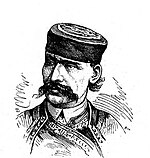
In 1882, an uprising broke out against the Austro-Hungarian military and administrative occupation authorities. It was a joint uprising of Serbs and Muslims against the new Austro-Hungarian government in Bosnia and Herzegovina. The main reason for the uprising in 1882 was the unresolved agrarian issue, taxes and the imposed military obligation on the local population. In social terms, the vast majority of the rebels were poor peasants. On the night of January 11, 1882, a group of armed peasants attacked the gendarmerie barracks in Ulog. The uprising soon spread to northeastern Herzegovina and southeastern Bosnia. The center of the 1882 uprising was in Ulog, where the rebel government was created. In the period January-February, the rebels led by Stojan Kovačević and Salih-Salko Forto tried to attack Foča and Trnovo (south and southeast of Sarajevo). Their main goal was the liberation of Sarajevo, which still has not recovered from the great fire of 1879. However, their units, poorly armed and operating separately, were unable to achieve success in the fight against superior enemy forces. In April 1882, Austro-Hungarian troops suppressed the uprising. They were about 10,000 infantry and four batteries. Sporadic sabotage and guerrilla actions lasted until November 1882.
Annexation
Main article: Bosnian crisis
Even though Bosnia and Herzegovina was still part of the Ottoman Empire, at least formally, the Austrian-Hungarian authorities had factual control over the country. Austria-Hungary waited for a chance to incorporate Bosnia and Herzegovina formally as well. Any action concerning Bosnia and Herzegovina depended on international opinion, which Austrian-Hungarian authorities were aware of. They used the Young Turk Revolution in the Ottoman Empire to finally annex Bosnia and Herzegovina. The Young Turk movement had gained support in mass protests throughout the Ottoman Empire during 1908, with the intention to restore the suspended Ottoman constitution. The Austrian-Hungarian authorities were afraid that the revolution could spread to Bosnia and Herzegovina, as it had support from the Bosnian Muslims and the Serbs, who supported the autonomy of Bosnia and Herzegovina within the Ottoman Empire. On 7 September 1908, the SNO and the MNO demanded that Bosnia and Herzegovina accept the constitution as part of the Ottoman Empire.
On 5 October the Emperor Franz Joseph announced the annexation of Bosnia and Herzegovina and ordered the Minister of Finance to compose a constitution for Bosnia and Herzegovina. The annexation was announced in Sarajevo two days later, on 7 October. This annexation led to an international crisis, which was solved on 26 February 1909 when the Ottoman Empire recognised the annexation having received material compensation and on the Austrian-Hungarian garrisons leaving the Sanjak of Novi Pazar. By this, Bosnia and Herzegovina was formally under the Austrian-Hungarian sovereignty. On 21 March 1909, the German Empire sent an ultimatum to the Russian Empire to recognise the annexation, which Russia did immediately. Soon, the Kingdom of Serbia recognised the annexation on 31 March, the Kingdom of Montenegro doing so on 5 April.
The annexation caused unrest among the Muslim and Serb population. The Streifkorps (special counterinsurgency units) were reestablished in the context of demonstrations in Serbia and in Montenegro against the annexation. The Muslims could not believe the sovereignty of the Sultan could be overturned with a proclamation, and that they were now ruled by a Christian emperor. The MNO and the SNO refused to give any official statement about the annexation. In Budapest they held a meeting on 11 October 1908 they issued the Message to the People of Bosnia and Herzegovina, where they stated that the people couldn't reconcile with the Austrian-Hungarian occupation in 30 years and asked for the people to remain calm and wait for the decision of the superpowers. Both parties announced that they would continue the struggle for the autonomy of Bosnia and Herzegovina. However, since all European countries had already recognised the annexation, the SNO and the MNO, who wanted to continue their activity as legitimate organisations, thus recognised the annexation; the SNO doing so in May 1909 and the MNO in February 1910. Unlike the Serbs and the Muslims, the Catholic Croats enthusiastically accepted the Austrian-Hungarian annexation. In an audience to Emperor Franz Joseph, the representatives of the HNZ, Pilar, Nikola Mandić and Antonije Sunarić expressed the gratitude of the Croat people to the Emperor for the annexation at the end of October 1908. However, Croat enthusiasm did not endure, as Bosnia and Herzegovina failed to be joined with Croatia as expected.
Politics
| Part of a series on the |
|---|
| History of Bosnia and Herzegovina |
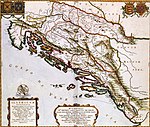 |
Early history
|
Middle Ages
|
Ottoman era
|
| Habsburg era |
| Yugoslavia |
Contemporary
|
|
|
In Bosnia and Herzegovina, every major ethnic group was represented by its political party. The Muslims were represented by the Muslim People's Organisation, the Serbs were represented by the Serbian People's Organisation, and the Croats were represented by the two political parties, the Croatian People's Union and the Croatian Catholic Association.
The Diet of Bosnia was established in 1910.
Parliamentary parties
- Croatian People's Union (Hrvatska narodna zajednica)
- Croatian Catholic Association (Hrvatska katolička udruga)
- Muslim People's Organisation (Muslimanska narodna organizacija)
- Serbian People's Organisation (Srpska narodna organizacija; Српска народна организација)
Non-parliamentary parties
- Muslim Progressive Party (Muslimanska napredna stranka)
- Muslim Democracy (Muslimanska demokracija)
- Serbian People's Independent Party (Srpska narodna nezavisna stranka)
- Socialdemocratic Party of Bosnia and Herzegovina (Socijaldemokratska stranka Bosne i Hercegovine)
Demographics

| Census | Muslim | Orthodox | Catholic | Jewish | Total | ||||
|---|---|---|---|---|---|---|---|---|---|
| Number | Share | Number | Share | Number | Share | Number | Share | ||
| 1879 | 448,613 | 38.7% | 496,485 | 42.9% | 209,391 | 18.1% | 3,675 | 0.3% | 1,158,440 |
| 1885 | 492,710 | 36.9% | 571,250 | 42.8% | 265,788 | 19.9% | 5,805 | 0.4% | 1,336,091 |
| 1895 | 548,632 | 35.0% | 673,246 | 42.9% | 334,142 | 21.3% | 8,213 | 0.5% | 1,568,092 |
| 1910 | 612,137 | 32.2% | 825,418 | 43.5% | 434,061 | 22.9% | 11,868 | 0.6% | 1,898,044 |
Administration

Bosnia and Herzegovina was governed jointly by Cisleithania (Austria) and the Lands of the Crown of Saint Stephen (Hungary) through the joint Ministry of Finance. In the Ministry of Finance, there was the Bosnian Office which controlled Bosnia and Herzegovina over the Government based in Sarajevo. The Government of Bosnia and Herzegovina was headed by a governor, who was also a commander of military forces based in Bosnia and Herzegovina. The government was also composed of the governor's deputy and chiefs of departments. At first, the government had only three departments, administrative, financial and legislative. Later, other departments, including construction, economics, education, religion, and technical, were founded as well.
In the 1910 Constitution, the Emperor proclaimed Bosnia and Herzegovina to be a unique administrative territory under the responsible leadership of the joint finance minister. With the implementation of the constitution, the position of Bosnia and Herzegovina did not change. It remained a corpus separatum administered by Austria and Hungary. The constitution implemented three new constitutions, the Diet of Bosnia, the National Council and the municipal councils. The Diet of Bosnia had very limited legislative powers. The main legislative power was in the hands of the emperor, parliaments in Vienna and Budapest and the joint minister of finance. The Diet of Bosnia only proposed decisions which needed to be approved by the parliaments in both Vienna and Budapest. The Diet also had no impact on the administrative-political institutions, the National Council and the municipal councils and it didn't have the right to participate in every decision-making; the Diet could participate only in decisions that mattered Bosnia and Herzegovina exclusively, while decisions on armed forces, commercial and traffic connections, customs and similar matters, were made by the parliaments in Vienna and Budapest.
The Austrian-Hungarian authorities left the Ottoman division of Bosnia and Herzegovina untouched, they only changed the names of divisional units. Thus the Bosnia Vilayet was renamed to Reichsland, sanjaks were renamed to Kreise, kazas were renamed to Bezirke, while nahiyahs were renamed to Exposituren. There were six Kreise and 54 Bezirke. Head of the Reichsland was a Landeschef, heads of the Kreise were Kreisleiters and heads of the Bezirke were Bezirksleiters.
Governors
| No. | Portrait | Name (Lifespan) |
Ethnicity | Term of office | ||
|---|---|---|---|---|---|---|
| Took office | Left office | Duration | ||||
| 1 | 
|
Josip Filipović (1818–1889) |
Croat | 13 July 1878 | 18 November 1878 | 128 days |
| 2 | 
|
Wilhelm von Württemberg (1828–1896) |
German | 18 November 1878 | 6 April 1881 | 2 years, 139 days |
| 3 | 
|
Hermann Dahlen von Orlaburg (1828–1887) |
German ("Saxon" born in Hungary) | 6 April 1881 | 9 August 1882 | 1 year, 125 days |
| 4 | 
|
Johann von Appel (1826–1906) |
German (born in Hungary) | 9 August 1882 | 8 December 1903 | 21 years, 121 days |
| 5 | 
|
Eugen von Albori (1838–1915) |
Venetian/German born in Dalmatia, Austria | 8 December 1903 | 25 June 1907 | 3 years, 199 days |
| 6 | 
|
Anton von Winzor (1844–1910) |
German | 30 June 1907 | 7 March 1909 | 1 year, 255 days |
| 7 | 
|
Marijan Varešanin (1847–1917) |
Croat | 7 March 1909 | 10 May 1911 | 2 years, 64 days |
| 8 | 
|
Oskar Potiorek (1853–1933) |
Czech | 10 May 1911 | 22 December 1914 | 3 years, 226 days |
| 9 | 
|
Stjepan Sarkotić (1858–1939) |
Croat | 22 December 1914 | 3 November 1918 | 3 years, 316 days |
Religion
The region, which had been Islamised in the 15th and 16th centuries, largely retained its minority-Muslim population (which dropped from 38.7% in 1879 to 32.2% in 1910), as Austria-Hungary's December Constitution guaranteed freedom of religion and the authorities made no active attempts at conversion.
The emperor of Austria-Hungary had the ability to appoint and dismiss religious leaders and to control religious establishments financially through agreements created with the Pope, the Ecumenical Patriarchate, and the Sheikh-ul-Islam.
The occupation of Bosnia and Herzegovina led to great reforms of the Catholic Church in that country, after centuries in the Ottoman Empire. In 1881, Vrhbosna was elevated to an archdiocese, and the dioceses of Banja Luka and Mostar-Duvno were formed. Work began on the Sacred Heart Cathedral in Sarajevo in 1884 and was completed by 1889.
See also
- Assassination of Archduke Franz Ferdinand of Austria
- Bosnian-Herzegovinian Infantry
- Ludwig Thallóczy
References
- ^ Zovko 2007, p. 13.
- Modern History Sourcebook: The Treaty of Berlin, 1878—Excerpts on the Balkans hosted by Fordham University
- Oršolić 2000, pp. 289–291.
- Oršolić 2000, p. 299.
- Oršolić 2000, p. 294.
- Oršolić 2000, p. 304.
- Oršolić 2000, p. 301.
- Oršolić 2000, pp. 302–303.
- Rothenberg 1976, p. 101-02.
- Sugar 1963, p. 201.
- Ramet 2008, pp. 74–76.
- ^ Velikonja 2003, pp. 130–135.
- Zovko 2007, p. 17-18.
- Hajdarpasic, Edin (2015). Whose Bosnia? Nationalism and Political Imagination in the Balkans, 1840-1914. Ithaca and London: Cornell University Press. pp. 160–198. ISBN 978-0-8014-5371-7.
- Zovko 2007, p. 18.
- Zovko 2007, p. 18-19.
- Zovko 2007, p. 19.
- Zovko 2007, p. 19-20.
- Kapo, Midhat, Nacionalizam i obrazovanje: Studija slučaja Bosna I Hercegovina [Nationalism and Education: Case Study Bosnia and Herzegovina] (in Bosnian)
- Zovko 2007, p. 20.
- Zovko 2007, p. 20-21.
- Zovko 2007, p. 21.
- Zovko 2007, p. 21-22.
- Zovko 2007, p. 22.
- Zovko 2007, p. 22-23.
- Zovko 2007, p. 23-24.
- ^ Zovko 2007, p. 24.
- Krišto 2006, p. 61.
- Zovko 2007, p. 24-25.
- ^ Zovko 2007, p. 25.
- ^ Ovčina et al.
- ^ Zovko 2007, p. 26.
- (Holbach 1910, p. 154): "The " Streifkorps " were disbanded many years ago, but reorganised in October, 1908, at the time of our second visit to Bosnia, on account of the demonstrations in Servia and Montenegro that followed the annexation,..."
- Zovko 2007, p. 26-27.
- ^ Zovko 2007, p. 27.
- ^ Zovko 2007, p. 16.
- Zovko 2007, p. 27-28.
- Džaja 1994, p. 45.
- Okey 1992, p. 63.
Sources
- Džaja, Srećko M. (1994). Bosnien-Herzegowina in der österreichisch-ungarischen Epoche 1878–1918 (in German). Oldenbourg Wissenschaftsverlag. ISBN 3-4865-6079-4.
- Holbach, Maude M. (1910). Bosnia and Herzegovina: Some Wayside Wanderings. J. Lane.
- Krišto, Jure (November 2006). "Ivo Pilar's Role in the Organization of Croats in Bosnia and Hercegovina". PILAR - Croatian Journal of Social Sciences and Humanities. I (2). Croatian History Institute: 57–68. ISSN 1846-3010.
- Okey, Robert (1992). "State, Church and Nation in the Serbo-Croat Speaking Lands of the Habsburg Monarchy, 1850–1914". Religion, State and Ethnic Groups. New York University Press. ISBN 1-8552-1089-4.
- Oršolić, Tado (June 2000). "Sudjelovanje dalmatinskih postrojbi u zaposjedanju Bosne i Hercegovine 1878" (PDF). Radovi / Institute for Historical Sciences in Zadar (in Croatian) (42). Croatian Academy of Sciences and Arts: 287–308. ISSN 1330-0474. Retrieved 13 January 2011.
- Ovčina, Ismet; Smajić, Muamera; Mešić, Alma (2022). "140 Years of the Herzegovina Uprising: Research and Unification of Materials From the Legacy of Hamdija Kapidžić and Documents About the Herzegovina Uprising in the Funds of the NULB&H, Archive of B&H, Academy of Sciences and Arts of Bosnia and Herzegovin". Bosniaca. 27 (27). doi:10.37083/bosn.2022.27.49.
- Ramet, Sabrina P. (2008). "Nationalism and the 'Idiocy' of the Countryside: The Case of Serbia". Serbia, Croatia and Slovenia at Peace and at War: Selected Writings, 1983–2007. LIT Verlag Münster. ISBN 978-3-0373-5912-9.
- Rothenberg, Gunther E. (1976). The Army of Francis Joseph. Purdue University Press. ISBN 978-1-5575-3145-2.
- Sugar, Peter F. (1963). Industrialization of Bosnia-Hercegovina: 1878–1918. University of Washington Press. p. 201. ISBN 978-0-2957-3814-7.
- Velikonja, Mitja (2003). Religious Separation and Political Intolerance in Bosnia-Herzegovina. Texas A&M University Press. p. 130. ISBN 1-5854-4226-7.
- Zovko, Ljubomir (2007). Studije iz pravne povijesti Bosne i Hercegovine: 1878–1941 (in Croatian). University of Mostar. ISBN 978-9-9589-2712-6.
Further reading
- Banac, Ivo (1988). The National Question in Yugoslavia: Origins, History, Politics. Cornell University Press. ISBN 0-8014-9493-1.
- Bataković, Dušan T. (1996). The Serbs of Bosnia & Herzegovina: History and Politics. Dialogue Association. ISBN 978-2-9115-2710-4.
- Europa Publications, ed. (2003). Central and South-Eastern Europe 2004. Psychology Press. ISBN 978-1-8574-3186-5.
- Hajdarpasic, Edin (2015). Whose Bosnia? Nationalism and Political Imagination in the Balkans, 1840-1914. Cornell University Press. ISBN 978-0-8014-5371-7.
- Jayne, Kingsley Garland (1911). "Bosnia and Herzegovina" . Encyclopædia Britannica. Vol. 4 (11th ed.). pp. 279–286.
| Subdivisions of Austria-Hungary | |
|---|---|
| Cisleithania | |
| Transleithania | |
| Condominiums |
|
- Austro-Hungarian rule in Bosnia and Herzegovina
- Subdivisions of Austria-Hungary
- Condominia (international law)
- Former countries in the Balkans
- Historical regions of Bosnia and Herzegovina
- 1870s in Bosnia and Herzegovina
- 1890s in Bosnia and Herzegovina
- 1900s in Bosnia and Herzegovina
- 1910s in Bosnia and Herzegovina
- States and territories established in 1878
- States and territories disestablished in 1918
- 1878 establishments in Austria-Hungary
- 1910s disestablishments in Bosnia and Herzegovina
- 19th century in Bosnia and Herzegovina
- 20th century in Bosnia and Herzegovina
- Austria-Hungary–Serbia relations
- Lands of the Empire of Austria (1867–1918)
- Lands of the Kingdom of Hungary (1867–1918)